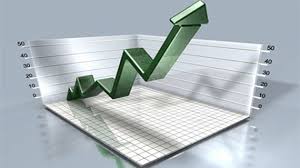All You Need To Know About Float And Market Cap
The link between firm size, return potential, and risk is critical to any long-term financial plan you're developing. A deeper understanding of "market caps" can help you better plan your stock portfolio, and you'll be more equipped to do so.
Author:James PierceReviewer:Paolo ReynaMar 09, 20223.2K Shares410.7K Views

The link between firm size, return potential, and risk is critical to any long-term financial plan you're developing. A deeper understanding of "market caps" can help you better plan your stock portfolio, and you'll be more equipped to do so. Let's discuss what float and market capis and it affects any business.
What Is Float And Market Cap
Please allow us to clarify the meanings of the terms "float" and "market capitalization." Float refers to the quantity of shares that may be traded on the market at any one time. For instance, in July 2016, there were 5.3 billion shares of Apple Inc. available on the market for buying and trading. "Mega cap" stockholders include the likes of Apple Inc. Because of the huge volume and money required to trade these stocks, Apple's shares may only fluctuate by one or two dollars per day on average. Because of their low volatility, they are unpopular among day traders. Volatility is a key factor for day traders.
While some stocks have a low float, there are others that do not. There are just 1.2 million shares of Cesca Therapeutics Inc. (KOOL) on the market. This indicates that there is a limited supply of KOOL shares, which means that a big demand for the stock might have a significant impact on the price. It is possible for low float stocks to be volatile and move quickly. In most cases, low-floating stocks are early-stage enterprises that have yet to make a profit. As they develop, they issue more shares and raise more money from the public market, which eventually leads to their becoming megacap companies. Stocks with a low float are referred to as "small cap" or "micro-cap." Stocks with a low float are particularly attractive to day traders.
Categories Of Low Float Stocks
Under $10
Low float stocks, defined as those with a market value below $10, fall under this group. These stocks are very volatile, fluctuating by 10%, 20%, 100%, or even 1,000% per day.. Those types of maneuvers have taken place, for sure! This is an area in which you should use extreme caution. Your $1,000 can be turned into $10 just as simply as your $1,000 can be turned into $10,000 in a single deal. When it comes to trading low float equities under $10, only the most seasoned and well-equipped retail traders should get involved. They aren't really anything I'm interested in trading for myself. There's a good chance that someone who claims to have converted $1,000 into $10,000 in a month did it by trading low-float stocks. No trader, no matter how experienced, can match this level of precision and efficiency. Trading low float companies under $10 will certainly result in new investors losing their $1,000 investment in a couple of days. Low float equities are best served by the Bull Flag Momentum Strategy.
Between $10-$100
Stocks with a float of $10-$100 fall into the second group. There are between 10 and 500 million shares in these companies' floats, making them medium-sized. The VWAP and Support or Resistance Strategies described in this book work well with these stocks. Medium-float equities costing more than $100 do not have a lot of interest from retail day traders, therefore we stay away from them. Because of their high price, it's difficult to acquire a significant number of their shares. Because of this, day trading them is a waste of time. Institutional traders may handle them.
Mega Cap Stocks
Apple, Alibaba, Yahoo, Microsoft, and Home Depot are examples of large-cap companies that may be traded. Companies with more than $500 million in publicly traded stock tend to be well-established. Millions of shares of these stocks are exchanged each day. These equities only move when huge institutional investors, investment banks, and hedge funds purchase or sell substantial stakes, as you may have guessed. If you're a small-cap stock trader, you're unlikely to make much of an impact on the price. The average investor should stay away from these equities unless there is a compelling fundamental reason to do so.
Summary
Reversals and Moving Average Tactics are often effective on these stocks because of these strategies. These companies, unless there is a fundamental trigger, will be widely traded by computers and high-frequency traders, making them unsuitable for retail day trading.

James Pierce
Author

Paolo Reyna
Reviewer
Latest Articles
Popular Articles
